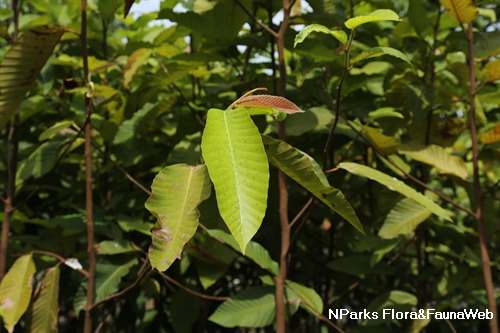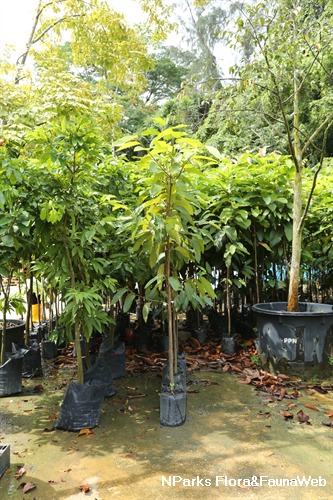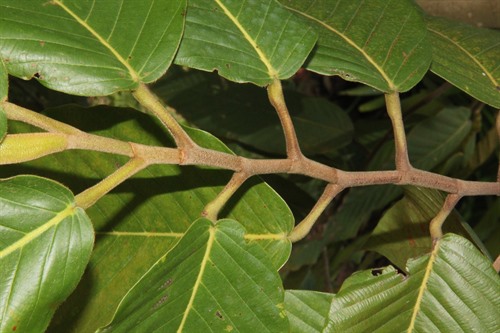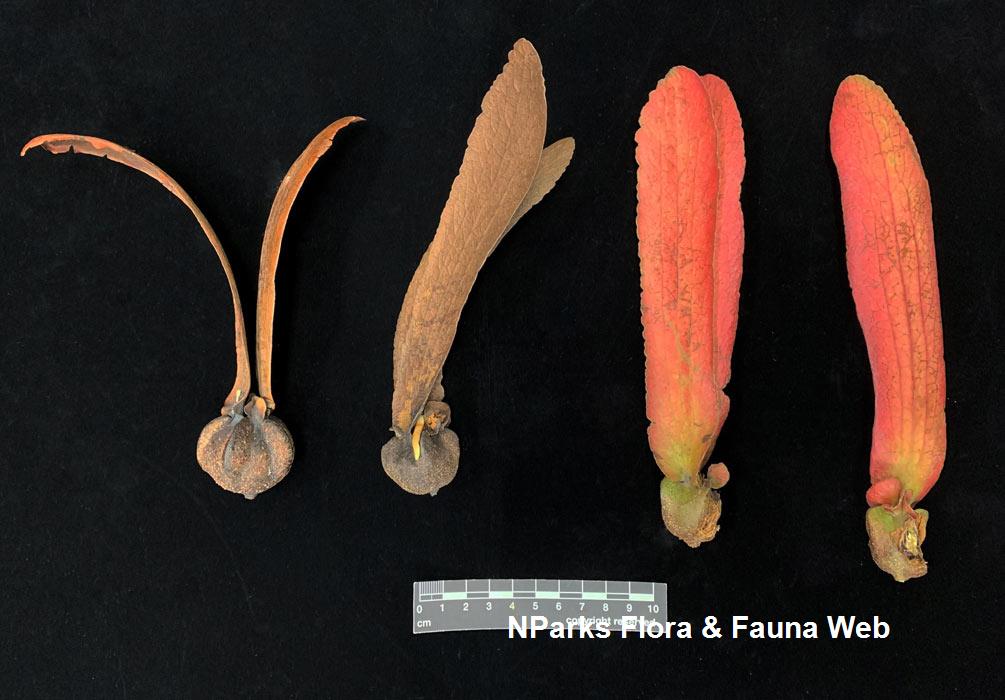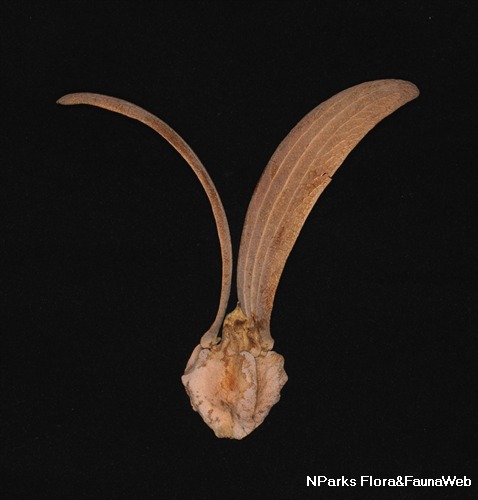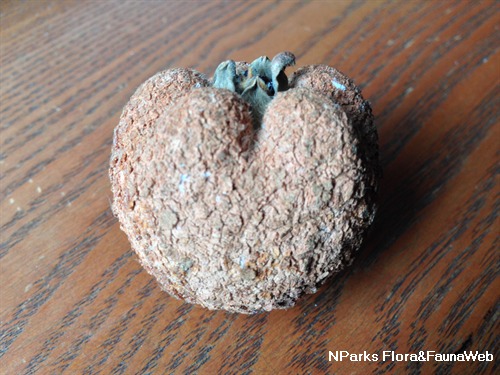
Back
Dipterocarpus alatus Roxb. ex G. Don
| Family Name: | Dipterocarpaceae |
| Synonyms: | Dipterocarpus philippensis, Dipterocarpus gonopterus |
| Common Name: | Hairy-Leafed Apitong, Keruing, Yang, Gurjin |
Name
Classifications and Characteristics
| Plant Division | Angiosperms (Flowering Seed Plants) (Dicotyledon) |
|---|---|
| Plant Growth Form | Tree (Big (>30m)) |
| Lifespan (in Singapore) | Perennial |
| Mode of Nutrition | Autotrophic |
| Maximum Height | 40 m |
Biogeography
| Native Distribution | Cambodia, Myanmar, Philippines, Bangladesh, Thailand, Vietnam |
|---|---|
| Native Habitat | Terrestrial (Primary Rainforest, Riverine) |
| Preferred Climate Zone | Tropical |
Description and Ethnobotany
| Foliage | Leaves are narrowly ovate to ovate to elliptical-oblong, 9-25 cm x 3.5-15 cm, base cuneate to rounded, apex acute or shortly indistinctly acuminate, sparsely pubescent above, beneath densely pubescent, petiole 2.5-4.5 cm long, stipules grayish-yellow pubescent. |
|---|---|
| Flowers | Flowers are large, bisexual, actinomorphic, scented; calyx 5 parts, united around the ovary into a tube but not fused to it, valvate lobes, 2 are long, oblong to spatulate while 3 short; petals large, oblong to narrowly oblong, strongly contorted, loosely cohering at base on falling, cream-white with a pink, red or purple stripe down the centre. |
| Fruit | A nut surrounded by the calyx, comparatively large; calyx tube glabrous, subglobose, 5 wings of 8 mm broad, 2 larger calyx lobes up to 14 cm x 3 cm, 3 shorter ones up to 12 mm x 14 mm. |
| Ethnobotanical Uses | Medicinal: The resin is disinfectant, laxative, diuretic and mildly stimulant. It can be mixed with bees wax and used as an antiseptic on ulcerated wounds.
The bark with 2-4 leaves is believed to be effective against rheumatism and liver diseases. Timber & Products: It is used in carpentry, panelling, joinery, floors, boxes and crates, veneer, etc. Others: Its resin is used by indigenous people for illumination and waterproofing baskets and boats. Industrially, it is used for paint, varnish and lacquer. The essential oil is used as a fixative in perfumes. |
Landscaping Features
| Landscape Uses | Riverine, Reforestation |
|---|
Fauna, Pollination and Dispersal
| Seed or Spore Dispersal | Abiotic |
|---|
Plant Care and Propagation
| Light Preference | Full Sun, [Remarks] (Younger trees can survive under shade for several years, while older ones are more light-demanding.) |
|---|---|
| Water Preference | Moderate Water |
| Plant Growth Rate | Moderate |
| Propagation Method | Seed, Sucker |
| Seed / Spore Germination Duration | 4 days to 7 days |
Foliar
| Foliage Retention | Evergreen |
|---|---|
| Mature Foliage Colour(s) | Green |
| Mature Foliage Texture(s) | Hairy / Hirsute |
| Foliar Attachment to Stem | Petiolate |
| Foliar Venation | Pinnate / Net |
| Foliar Base | Cuneate, Rounded / Obtuse |
Non - Foliar and Storage
| Trunk Type (Non Palm) | Woody, Single |
|---|
Floral (Angiosperm)
| Flower & Plant Sexuality | Bisexual Flowers |
| Flower Colour(s) | Cream / Off-White, White |
|---|---|
| Flower Symmetry | Radial |
Fruit, Seed and Spore
| Fruit Classification | Simple Fruit |
|---|---|
| Fruit Type | Indehiscent Dry Fruit |
Image Repository
Others
| Master ID | 29700 |
|---|---|
| Species ID | 4009 |
| Flora Disclaimer | The information in this website has been compiled from reliable sources, such as reference works on medicinal plants. It is not a substitute for medical advice or treatment and NParks does not purport to provide any medical advice. Readers should always consult his/her physician before using or consuming a plant for medicinal purposes. |

